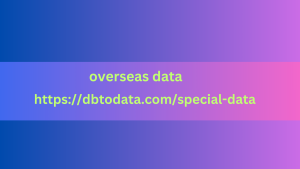Throughout history, people have developed and produced many different products such as vehicles, machines and robots for their own use and commercial purposes. In times when social circles were not as large as they are today, the working method, purpose and usage of these vehicles were conveyed to users through small-scale written sources. One of the biggest priorities of today’s manufacturing companies is to prepare an understandable, easy, complete and consistent user manual. Knowing how and for what a product will be used is as vital as being able to produce it to meet the required standards. Since the world communicates in many different languages and commercial exchange has become widespread worldwide, user manuals need to be translated into the relevant languages after they are prepared.
The user manual, which is of critical importance for the manufacturer, consumer and product in many ways, should be translated in a way that is appropriate, complete, consistent and does not allow for misunderstandings. Things to Consider When Translating a User Manual: There are a few points that need to be paid particular attention to when translating the user manual. These points are generally as follows: To get to know the product by doing research about it, Determining the target audience and using the language and sentence structure consistently in the translation.
To make a proper translation
According to the client’s instructions. Getting to Know the Product Knowing the product whose user manual is to be translated is the most critical starting point in this type of translation. If you learn what the product to be translated does and how it looks, the possibility of making an incorrect translation and thus harming everyone and everything that interacts with the product will be minimized.
Special Data: Special facts refers to specific overseas data or touchy facts that requires careful managing. This can encompass non-public identifiers, amazing business corporation organisation facts, or any information that goals encryption. Managing specific records successfully ensures privacy compliance and builds go through in mind, particularly in sectors like healthcare, finance, and government.
What is a Translation Reference File? At this point, the first priority should be the reference documents provided by the customer or project manager. If no reference documents are provided, video, photo and article sources prepared on the internet about the product in question should be researched and used. If no information about the product is found, information should be requested from the customer / project manager. Another action that can be taken to prepare for user manual translation is to read Turkish user manuals that have already been written and pay attention to the style while doing this reading.
The style of the translation
That will be made after such readings will be as expected from a Turkish user manual. Translation Stage After the preparations and readings mentioned above are completed, the step of translating the source text should be started. At this point, the first priority should be to read and understand the instructions sent by the client or project manager and request clarification on any unclear parts. What is a Translation Instruction? Even if the work to be done is clear and concise, reviewing the client’s instructions is critical to the health of the project.
The client may have sent a glossary or translation memory that they want to use in this translation, or there may be some important points in the source text that they want to emphasize. After the instructions have been carefully reviewed, the translation phase can be fully completed. Sentence Structure in User Manual Translation In order to greatly reduce the amount of editing work to be done after the translation is completed and to obtain a consistent translation, sentence usage and address form are of critical importance. The sentence style to be adopted from the beginning to the end of the text should be determined in the translation (there may be exceptional uses). For example.
The sentence Use a suitable
Screwdriver to remove the screws on the bottom cover, as shown in Image 4.” can be translated as “Use a suitable screwdriver to remove the screws on the bottom cover, as shown in Image 4.” However, if we give this sentence to different translators, different translations may emerge. At this point, it is necessary to determine whether the word “remove” will be used as “knock out” or “extract”, and this word should be translated using the same equivalent throughout the document, i.e. consistently.
Therefore, in order to maintain
consistency, it is important to use the same expressions throughout the text and to ask the customer about the parts that do not make sense. The Importance of Consistency in Translation In addition to the consistency in sentence usage france business email data mentioned above, this heading mentions the consistent use of words that are frequently used in the source text.
Translation Target Audience As with all translations , it is necessary to research the audience that the translation will reach and to make a translation that is suitable for the linguistic habits of this audience. A user manual that the audience has difficulty understanding will have minimal func ew leads tionality. In order to minimize such functional losses and increase the efficiency of the translation, it is vital to understand the audience in the best way possible. User manuals can be prepared for different audiences. The user manual that comes in the box of a fan that will go to the end consumer is prepared using a style that everyone can understand and its translations into other languages are based on this simplicity.
However, the user manual of a new model
Plastic Injection Machine sent to a production facility is prepared with a more technically intensive language because it will be read by technical personnel who have received training on the use of this machine and are familiar with the technical jargon. The target audience of the company preparing the user manual should be understood and the word selection, sentence structure and addressing style should be arranged accordingly. In order for the user manual to achieve the intended efficiency, it is of great importance for the translator to act according to the target audience. User Interface (UI) and Do Not Translate (DNT) As a result of the developments in technology in the age we live in, a very different point has been reached, especially in terms of usability and multi-functionality.
With the increase in the usage area of screens, virtual and adaptable buttons have started to be used instead of physical buttons. However, although the world trend has shifted to virtual design, there are still devices, machines and other products that have physical buttons. The texts and abbreviations on these physical buttons are mostly prepared in English.
The texts on the buttons may
Not always be as easy to understand or widely known as “ON” and “OFF”. For this reason, a DNT (Do Not Translate) list should be requested from the customer or project manager (if any) regarding which parts should not be translated and the customer instructions should be reviewed again before starting the translation directly.



